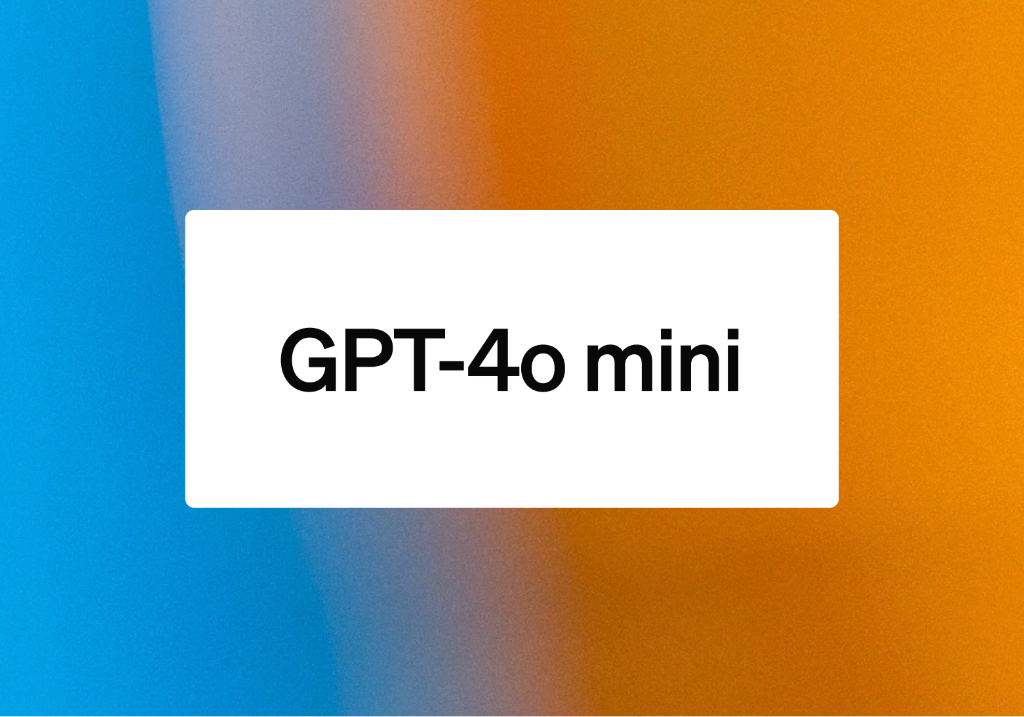In a significant advancement towards democratizing access to cutting-edge AI capabilities, OpenAI has officially launched GPT-4o mini, a cost-efficient yet powerful language model designed to empower developers across diverse domains. This latest addition to the GPT family aims to bridge the gap between affordability and high performance, making advanced AI accessible to a wider audience.
Key Features of GPT-4o Mini:
- Cost-Effective: Significantly cheaper than previous models, making it accessible to a wider range of developers. This democratization of AI technology will allow smaller businesses and individual developers to harness the power of AI, fostering innovation and competition in the market.
- Smaller Model Size: Facilitates faster processing and deployment. This translates to quicker response times for users and reduced infrastructure costs for developers.
- Improved Tokenizer: Efficiently handles text in multiple languages, including non-English text. This enhanced multilingual capability will enable developers to create applications that cater to diverse global audiences, breaking down language barriers.
- High Performance: Scores well on benchmarks and surpasses GPT-4 in some areas. This demonstrates its capability to handle complex tasks and generate high-quality outputs, making it a valuable tool for a wide range of applications.
- Multimodal capabilities: While initially only handling text and images, OpenAI plans to expand it’s capabilities to include video and audio input/output in the future. This will make it an even more versatile tool for developers, enabling them to create innovative multimedia applications.

Read more: OpenAI Unveils GPT-4o: A New Era in AI
Potential Impact of GPT-4o Mini:
The introduction of GPT-4o mini is expected to have a profound impact on the development of AI applications, empowering developers of all backgrounds to build and scale powerful AI-driven solutions with greater ease and efficiency.
- Enhanced Accessibility: By making advanced AI more affordable and accessible, it will enable developers to incorporate AI capabilities into a wider range of applications, including customer support chatbots, content generation tools, language translation services, and coding assistants.
- Improved Performance: Its high performance on reasoning tasks, including mathematical reasoning and coding, makes it a valuable tool for developers working on complex applications.
- Multilingual Support: The model’s improved tokenizer allows it to handle text in multiple languages efficiently, opening up new possibilities for developers creating global applications.
- Faster Development Cycles: The smaller model size and faster processing times of GPT-4o mini will enable developers to iterate more quickly and bring their AI-powered solutions to market faster.
- Reduced Costs: The cost-effectiveness of GPT-4o mini will make it a more attractive option for developers, reducing the financial barriers to entry for AI development.
Read more: OpenAI Partners with TIME Magazine to Revolutionize News Delivery with AI
Availability and Pricing:
GPT-4o mini is now readily available through OpenAI’s Assistants API, Chat Completions API, and Batch API. Developers can also access it through the Azure AI platform, with a global pay-as-you-go deployment option offering the highest throughput limits.
The pricing is significantly more affordable than its predecessors:
- Input: $0.15 per million tokens
- Output: $0.60 per million tokens
This competitive pricing structure makes it an attractive option for developers seeking to leverage powerful AI capabilities without incurring exorbitant costs.
Read more: The AI Whisperer: OpenAI’s Mira Murati Hints at GPT-5’s PhD-Level Potential
Conclusion:
OpenAI’s GPT-4o mini represents a significant step forward in making advanced AI models more accessible and affordable for a wider range of users. With its impressive capabilities, user-friendly features, and cost-effective pricing, it has the potential to revolutionize the development of AI applications and empower developers to create innovative solutions that address real-world challenges.
GPT-4o Mini: Frequently Asked Questions
A. It’s a new, cost-effective language model developed by OpenAI. It is designed to be more accessible for developers, offering powerful AI capabilities at a fraction of the cost of previous models.
A. It’s smaller and more affordable than models like GPT-4 and GPT-3.5 Turbo. It is designed for efficiency and speed, making it ideal for applications where cost and latency are critical factors. However, it may not be as powerful as larger models for certain complex tasks.
A. Cost-Effective: Significantly cheaper than previous models.
Smaller Model Size: Faster processing and deployment.
Improved Tokenizer: Handles multiple languages, including non-English text, more efficiently.
High Performance: Scores well on benchmarks and even outperforms GPT-4 in some areas.
Multimodal Capabilities: Supports text and image inputs currently, with video and audio planned for the future.
A. It is available through OpenAI’s Assistants API, Chat Completions API, and Batch API.
A. GPT-4o mini can be used for a variety of applications, including:
Customer support chatbots: Providing efficient and cost-effective customer service.
Content generation: Generating high-quality text for websites, articles, and social media.
Language translation: Accurately translating text between different languages.
Code generation: Assisting developers in writing code and automating tasks.
Multimedia Applications: With the upcoming support for video and audio, it will enable the development of innovative multimedia applications.
A. Reduced Costs: Its affordability makes it a budget-friendly option for a wider range of developers.
Faster Development Cycles: The smaller model size enables quicker iterations and deployment of AI-powered solutions.
Enhanced Accessibility: It democratizes access to powerful AI capabilities, fostering innovation and competition.
Multilingual Support: The improved tokenizer allows for broader language support, catering to diverse global audiences.
A. It is a powerful and versatile tool, it may not be the best fit for all applications. For extremely complex tasks requiring the highest levels of performance and accuracy, larger models like GPT-4 may be more suitable. However, for many use cases, it’s balance of cost-effectiveness and performance makes it an ideal choice.



